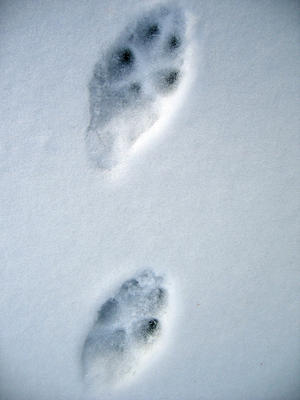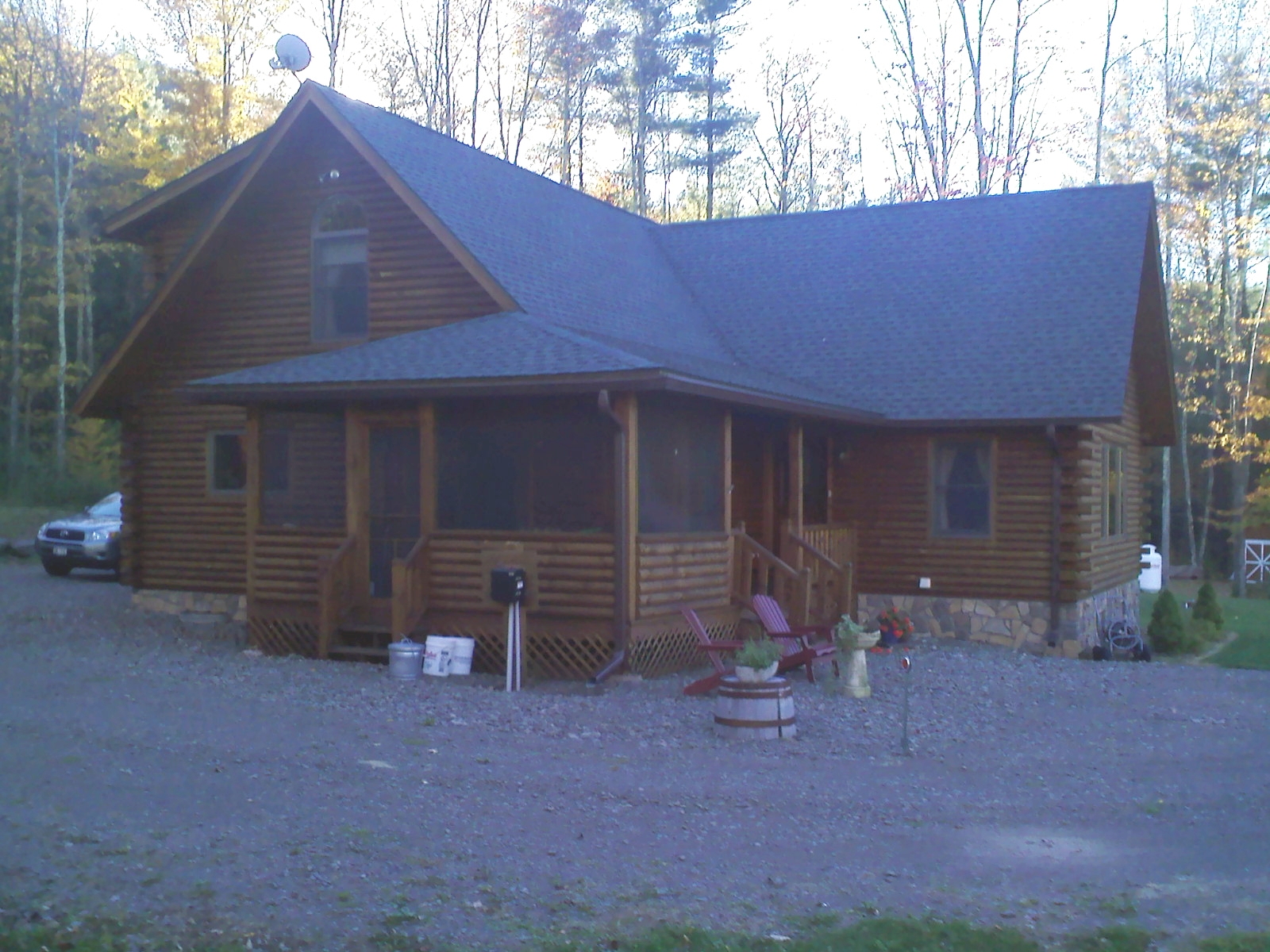Welcome to the 26th edition of Windows on Wildlife! If you have a recent post about wildlife you would like to share (it can be anything: birds, insects, mammals…) scroll down to the end of the post and add your site. I will compile and post all additions the following week. Please don’t forget to link back here (I’d love it if you’d add the Windows on Wildlife button to your post which you can find on our sidebar) and visit other blogs that have articles to share. Thanks for stopping by!
Since I’m on the topic of fox tracking due to my recent (mini) tracking walk, I thought I’d cover how to identify red fox tracks. The fun thing about learning how to id fox tracks is that they’re a species that’s really well adapted to living around humans, so you don’t have to be out in the middle of nowhere to find them.
Foxes are canines, and therefore their tracks very closely resemble those of other wild canines – mainly coyotes and wolves (for those of us here in North America) – only smaller. Canine tracks are oval in shape, with four toe pads and a triangular heel pad. Additionally, canines can’t retract their claws (unlike most felines), so nail marks usually (though not always) show up in their tracks.
Canine tracks are symmetrical – feline, weasels and many other species have asymmetrical tracks. Compare the fox tracks above – oval and symmetrical, to the bobcat tracks below:
Notice how the toes in a feline track form an asymmetrical arc around the heel pad, and the lack of claw impressions above the toes. Cats (wild and domestic) use their claws for purchase if footing is slippery, so finding claw marks with tracks doesn’t automatically rule out felines.
Another way to discern between canine and feline or weasel tracks, is the negative space between the pads. In canine tracks a mound of substrate, almost forming a pyramid, often appears in the center of the X-shaped lines created between the pads. In feline and weasel tracks (see the fisher tracks below for an example of weasel tracks), the space between the toe and heel pads forms a C-shape.
Discerning weasel tracks from canine and feline is pretty straightforward; although they have a similar asymmetrical shape, weasels have five toes, and felines (and canines) only have four.
If you’ve encountered tracks in your yard, or out in the woods, getting down to the family level of identification is a great start. So how to tell if the canine tracks you’re looking at are fox, coyote, or domestic dog? The first clue is size. Fox tracks are significantly smaller than eastern coyote / coywolf tracks (in the western US, where coyotes are smaller, careful measurements will still help you tell between red fox and coyote) and MUCH smaller than those of any wolf species.
Red fox tracks measure roughly 1 1/2 – 2 3/4″ long, and 1 1/4 – 2″ wide. Eastern coyote tracks roughly measure 2 1/2 – 3 1/2″ long and 1 1/2 – 3″ wide. If I’m in the field and don’t have a measuring tape or field guide with me, I’ll often use the palm of my hand for a rough (very rough) gauge. Eastern coyote tracks are close in size to the palm of my hand; red fox tracks are usually much smaller. For the record, if you’re tracking in a location that may have wolves, I use a whole-hand measurement for a rough first guess. Gray wolf tracks are close to the size of my whole hand, red wolves somewhat smaller.
Noticing how the animal is moving and the pattern of its tracks can help you discern the difference between wild canines (of any size) and domestic. Domestic dogs don’t have much of an agenda when they’re outside. Their tracks are messy and they tend to walk or run all over the place. Wild canines are trying to survive, and are usually moving with a purpose. Their trails will tend to move in straighter lines. While they will certainly make use of human-made trails for ease of traveling, eventually their tracks will veer away off into more remote areas.
When it comes to doing really thorough investigations of animal tracks, I’ve only scratched the surface. Ideally, you would compare the front track to the hind track (and take measurements of both), measure the stride of the animal (distance from tip of toes between two tracks) and straddle (distance from outside of left track, across trail to outside of right track) of the trail it’s left. And you would never try to come to any definitive conclusions about species identification based solely on a single track. Compare different tracks to make sure you know what you’re really seeing. Sometimes a single track from one animal can look remarkably like another. But if you compare many tracks, you’ll get to see how the tracks change depending on a variety of conditions. Also, backtracking the animal a way to get a feel of its gait, movement patterns and behavior will only add to your knowledge of any animal you’re tracking.
You can read this tracking article I wrote last winter if you want more info on identifying tracks.
If you want to get tracks you’ve found verified, take photos and careful measurements of tracks and trail (stride and straddle as noted above), and make sure your photo has an object in it for scale (coins and pens are good references if you don’t have a measure tape on you). And if you come across some fun (or confusing) tracks, take pictures and send them along – I love tracking photos. Happy tracking!
References and Recommended Resources:
======================================================
We had an exclusively international edition of Windows on Wildlife this week! Swapnil from Exploring the World, shared a list of the common wildlife species that can be found in Ranthambhore National Park, in Northern India (species list included tigers, vipers and mongoose, among may others – pretty cool). And from the Philippines, Andrea from Pure Oxygen Generators posted photos and info on an amazing, but dangerous caterpillar which can produce burns when touched.
Want to join us? Include your wildlife post in the link-up below!
Linking up this week (and last – sorry for not mentioning it, Michelle!) with Nature Notes










What a lot of great information. I did not know any of that!
Hi Betty! Glad to know I’ve provided some new info. 🙂
I will have to start looking for the fox tracks. I know they are around because of the odors they leave behind. Great post.
Oooh – I love that you can smell them where you are. Once you get familiar with fox tracks, you’ll start seeing them everywhere!
Great information and shots of the tracks.
Thanks Carver!
Really interesting..I have that tracking book and had hoped to get out and use it.. but when it is really cold, it makes it hard to breathe.. Ah…getting old… but I really enjoy these articles…I can add one of my posts or use my NN if you want for your meme…Michelle
I bet you wouldn’t have to go far on a warmer winter day to see a great variety of tracks around your pond! Would love to have your join WoW – feel free to share either NN or any other post – you’ve always got something that will fit in! Hope you’re getting the warmer weather out there that we have today – it’s near 50 here.
So interesting. I always learn so much from your posts.
Thanks Jen!
Hi – I live in suburban southwestern PA, but in an area w/ lots of undeveloped low-density forest and large deer populations (and lots of other, more appropriately sized coyote-food about). I’ve known we had coyotes in my town for awhile now, but I finally saw my first one tonight around midnight when I was putting out trash cans. The coyote was maybe 15-20ft away as it ran across the street, through yard and towards the forest. Because of where it crossed and the condition of the snow on either side of the road, I couldn’t discern tracks where I actually saw the animal. However, after some searching closer towards the treeline, I found what I think might be some of the coyote’s tracks. Can I send you a couple pictures (which include tape measure for reference) and get your opinion on them, if they’re coyote tracks or not? They’re definitely canine tracks at the very least, so I know I wasn’t taking pictures of housecat paw prints lol.
Hi Joe – cool coyote encounter! I’m envious. Definitely send photos along – cynthia@withywindlenature.com – and I’ll see if I can figure out your tracks! Thanks for getting in touch.
Cynthia